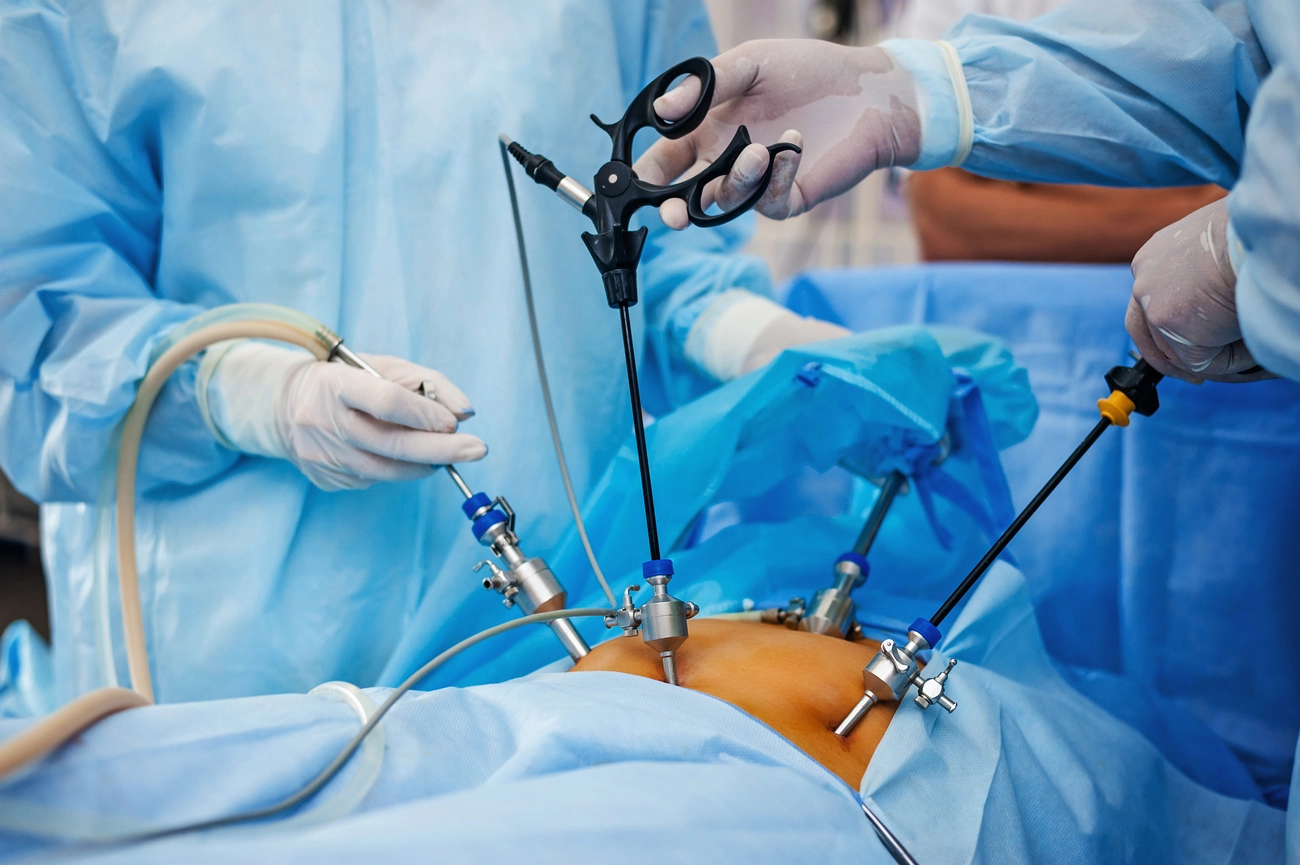
Why is Endoscopy Performed?
Endoscopy procedures are essential for diagnosing gastrointestinal issues by visualizing the digestive system’s internal structures.
Lower endoscopy focuses on examining the colon and rectum. Using endoscopes with cameras and lights, healthcare providers can identify abnormalities, take biopsies, and perform interventions.
This minimally invasive technique is crucial in gastroenterology for detecting conditions like colorectal cancer, inflammatory bowel disease, and gastrointestinal bleeding.
Advantages of Endoscopy:
Endoscopy aids in spotting gastrointestinal issues swiftly. It offers real-time visuals of the digestive tract, allowing accurate diagnosis and timely treatment. This procedure minimizes the need for invasive surgeries and reduces recovery time, fostering quicker return to normal activities.
Risks and Complications Associated with Endoscopic
Risks include perforation of the digestive tract, bleeding, and infections. Sedation used during the procedure may lead to adverse reactions in some individuals. In rare cases, patients may experience respiratory issues. Despite these risks, endoscopy remains a vital tool in diagnosing and treating gastrointestinal ailments due to its effectiveness in providing detailed insights without the need for major surgery. Patients are typically informed about these risks beforehand, and healthcare professionals take necessary precautions to mitigate them during the procedure.
Types of Endoscopic Procedures
Two common endoscopic procedures are upper endoscopy and colonoscopy.
Upper endoscopy examines the upper digestive tract, including the esophagus and stomach, while colonoscopy focuses on the large intestine. Both procedures are used to detect abnormalities like ulcers, polyps, and cancer.
Upper endoscopy helps diagnose conditions such as gastroesophageal reflux disease (GERD) and gastritis, while colonoscopy is vital for detecting colorectal cancer and inflammatory bowel disease.
Advanced techniques like endoscopic ultrasound (EUS) and endoscopic retrograde cholangiopancreatography (ERCP) provide detailed imaging for diagnosing conditions such as pancreatic cancer and bile duct disorders.
These procedures play a crucial role in early detection and management of gastrointestinal diseases, contributing to improved patient outcomes and quality of life.
Conditions Necessitating Endoscopy
Various gastrointestinal conditions necessitate endoscopic evaluation due to symptoms like abdominal pain, difficulty swallowing, and unexplained weight loss.
During Lower Endoscopy Procedure
During a lower endoscopy procedure, the patient is positioned on their side with knees drawn toward the chest. To ensure comfort, the surgeon may administer a sedative or pain reliever. Then, an endoscope, fitted with a light and a tube for pumping air, is inserted. This air inflation helps to expand the colon, offering a clearer view for detection. As the endoscope advances, sensations like cramping or the urge to defecate may be experienced.
Equipped with a miniature camera, the endoscope provides a detailed view of the colon’s interior, aiding in the identification of any potential diseases or abnormalities. This procedure is crucial for diagnostic purposes, allowing the medical team to assess the condition of the colon thoroughly.
Endoscopy plays a crucial role in diagnosing conditions such as polyps, which could develop into cancer if left untreated.
Additionally, it helps identify the source of gastrointestinal bleeding, a symptom of several serious conditions including ulcers and colorectal cancer.
Early detection through endoscopy enables prompt treatment initiation, leading to better patient outcomes and potentially preventing complications.
By providing direct visualization of the digestive tract, endoscopy allows for precise diagnosis and targeted intervention. Timely identification and management of gastrointestinal disorders enhance patient quality of life and reduce the risk of progression to advanced stages.
Post-Endoscopy Care and Recovery
Following endoscopy, it’s essential to manage any discomfort and side effects like bloating or throat irritation.
Patients are advised to resume normal activities gradually and avoid heavy lifting for a brief period. A soft diet is typically recommended initially, with gradual reintroduction of solid foods as tolerated.
It’s crucial to stay hydrated and avoid alcohol and smoking. Attend follow-up appointments to discuss biopsy results and potential further treatment.
These appointments ensure comprehensive understanding of the diagnosis and treatment plan. Adhering to post-endoscopy care guidelines promotes smooth recovery and reduces the risk of complications.
If experiencing persistent or severe symptoms post-procedure, promptly contact healthcare providers for guidance.
Conclusion
It’s important for you to recognize the significance of regular screenings for gastrointestinal health. Consulting with healthcare providers, such as Dr. Samir at our Hospital, regarding any concerns or symptoms is encouraged to ensure timely intervention and proper management of conditions.
By prioritizing regular screenings and seeking medical guidance when needed, individuals can take proactive steps towards maintaining their gastrointestinal health and reducing the risk of serious complications.
Regular check-ups and screenings are essential for early detection and effective treatment of gastrointestinal disorders, ultimately contributing to overall well-being and quality of life.
Surgical Services
Non-Surgical Services
- Anti-wrinkle Injection & FIllers
- Body Contouring & Cellulite
- Emsculpt
- Endymed 3Deep
- Experience Relief from Pain and Discomfort with Presso Therapy from a Qualified Surgeon
- Experience the Benefits of Arosha Body Wrap: Rejuvenate Your Skin and Feel Refreshed!
- Experience the Benefits of LPG Treatment: Rejuvenate Your Skin and Feel Refreshed!
- Experience the Benefits of VelaShape 3: Non-Invasive Body Contouring for Smoother, Firmer Skin.
- ICEwrap
- NuEra
- Redustim
- Say Goodbye to Stubborn Fat with CoolSculpting Fat Freeze!
- Shape Your Body with Sculptsure: Find a Sculptsure Surgeon to Help You Achieve Your Goals
- SmoothShapes
- Viora Life
- Dermatology
- Brighten Your Complexion with Glutathione Injections: Get a Whiter, More Radiant Skin Tone Today!
- Discover the Benefits of Professional Skin Treatment with a Skincare Specialist
- Enhance Your Lips with Lip Fillers and Contouring for a Natural Look
- Excessive Sweating
- Experience the Benefits of Botox Treatment: Look Younger and Feel Confident!
- Experience the Benefits of Skin Tightening with Thermage: Look Younger and Feel Confident!
- Rejuvenate Your Hair with PRP Hair Treatment and Mesotherapy
- Say Goodbye to Acne and Acne Scars with Professional Treatment Options
- Say Goodbye to Melasma: Get Professional Pigmentation Treatment Today
- Say Goodbye to Rosacea: Discover the Latest Rosacea Acne Treatment Options
- Say Goodbye to Unsightly Varicose and Spider Veins with Professional Treatment Options
- Say Goodbye to Unwanted Moles and Skin Tags with Professional Removal Services
- Skin Booster
- Transform Your Hair with Professional Hair Treatment and Hair Fixing Services
- Viora Life
- Dental
- Facial Therapies
- Gynaecology
- Hair Restoration






